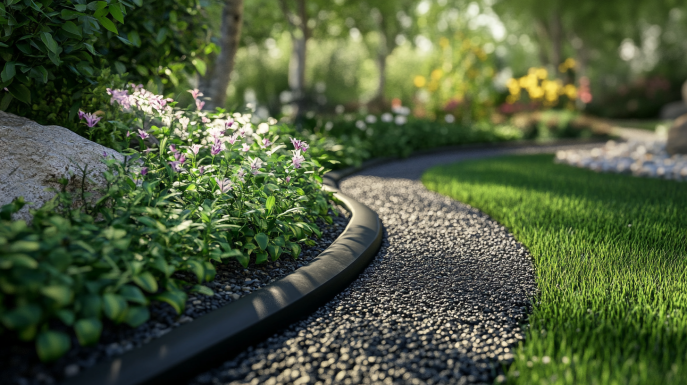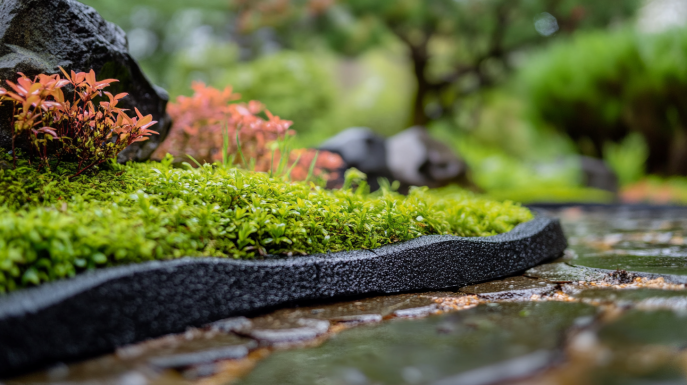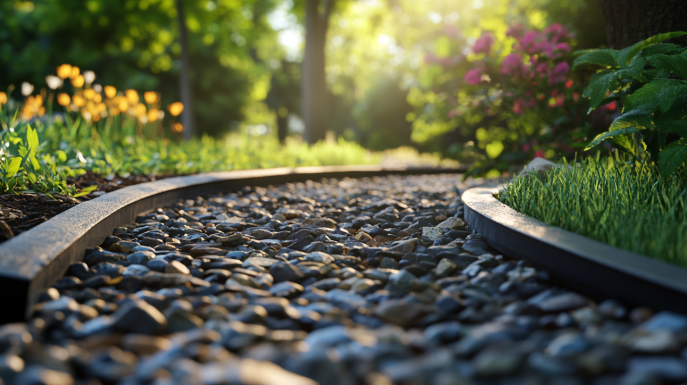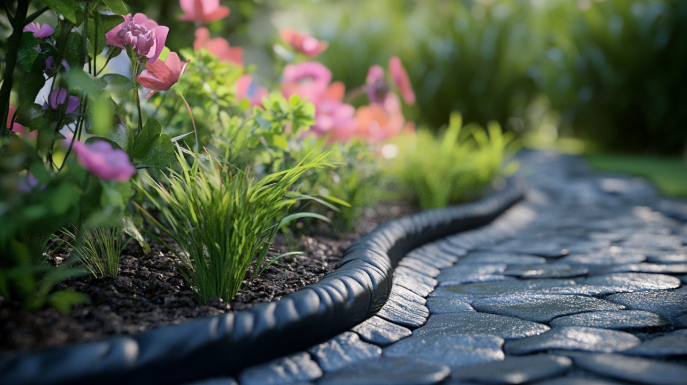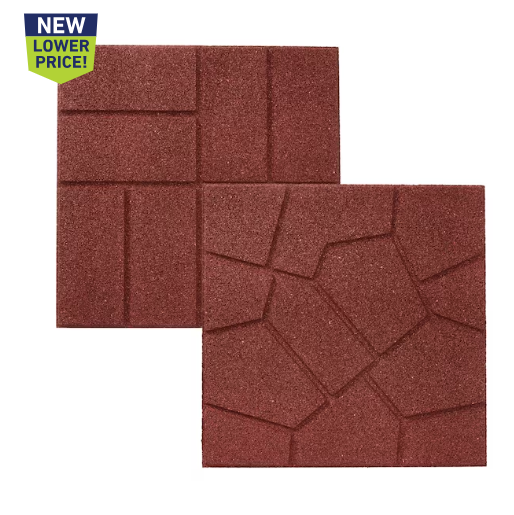
Rubberific 16-in L x 16-in W x 0.75-in H Square Red Rubber Paver
- Bring new life to old patios, decks and floors
- Reversible with 2 designs
- Long-lasting and durable
- Will not freeze or crack
Everything You Need to Know Before Installing Rubberific Pavers in Your Yard
Looking to give your outdoor space a unique, eco-friendly makeover? Rubberific pavers may be the perfect solution. Made from recycled tire rubber, these innovative pavers offer a range of benefits compared to traditional concrete or stone pavers.
But before you start shopping, it’s important to understand what exactly Rubberific pavers are, what they cost, where to buy them, how to install them properly, and all the pros and cons you need to consider. This comprehensive buying guide will walk you through everything you need to know to decide if Rubberific pavers are right for your next project.
What Exactly Are Rubberific Pavers?
Rubberific pavers are interlocking paver tiles made from recycled post-consumer tire rubber. They contain about 80% recycled rubber along with UV-resistant coloring and binding agents.
The recycled rubber gives the pavers their flexibility, traction, and noise-reduction. The vibrant colors come from UV-resistant pigments so they won’t fade over time. And the proprietary binding process produces durable, long-lasting pavers.
Unlike poured rubber surfacing, Rubberific pavers maintain their shape and design. They connect together like Lego blocks to create attractive patterns and designs. But underneath they remain permeable, flexible, and easy on your feet and legs.
How Much Does Rubberific Paver Installation Cost?
The total cost to install Rubberific pavers ranges from $8-20 per square foot on average. This factors in the cost of the pavers themselves, base preparation, edging, grid systems if needed, delivery fees, and professional installation.
The pavers alone cost $3-7 per square foot depending on the style. Simple flat or beveled tiles run cheaper. Unique shapes like hexagons and puzzle-edge styles cost more.
Other factors that affect the project cost include:
- Base prep work: Gravel and compacted rock add $1-3 per square foot.
- Edging: Bender board, metal, or plastic edging adds $.50-2 per foot.
- Grid system: Snap-together grids cost $.50-1 per square foot. Not always required.
- Delivery fees: $100-300 for shipping and handling.
- Professional installation: $2-5 per square foot is typical. DIY cuts this cost.
In total, expect to spend around $10 per square foot for a basic paver installation. More complex projects with intricate designs, grading work, or excavation may run $15-20 per square foot.
Where to Buy Rubberific Pavers
Rubberific pavers are sold through a network of specialty dealers and commercial installers. You can browse the Rubberific website to find authorized sellers near you.
Big box home improvement stores don’t typically carry Rubberific products. And you won’t find them on Amazon or other major online retailers. This controlled distribution helps Rubberific manage quality and service.
To buy Rubberific pavers you have two main options:
- Work with a local paver installer – They’ll have all the supplies and can provide turnkey installation services.
- Purchase from a specialty dealer – Buy the pavers and supplies yourself and hire your own installer.
Either route works fine. Just make sure to select an authorized Rubberific seller to ensure you get genuine Rubberific pavers. Also be sure to calculate the correct quantities and order 5-10% extra to allow for cuts and defects.
How to Install Rubberific Pavers
Installing Rubberific pavers takes some work, but it’s easier than pouring concrete or laying natural stone. Here are the basic steps:
- Excavate and prepare a 4-6 inch aggregate base. Compact with a plate compactor.
- Install perimeter edging to contain the pavers. Metal, plastic, or landscape edging works.
- Place leveling sand, about 1 inch deep. Smooth and compact lightly.
- Lay the pavers in your chosen pattern, butting edges together. Use a rubber mallet to tap together.
- Backfill joints with sand. Sweep off excess.
- Tamp pavers with a plate compactor on low power. Do this 2-3 times.
- Re-fill joints with polymeric sand and mist lightly with water to set sand.
The trickiest parts are ensuring an even base and keeping pavers aligned during tamping. Some installers use snap-together plastic grid systems as a guide. But this isn’t always required.
Be sure to follow the manufacturer’s detailed installation guide that comes with your order. And consider hiring a pro installer if you’re not up for a big DIY project.
The Many Benefits of Rubberific Pavers
Why choose Rubberific pavers instead of poured concrete, asphalt, or natural stone? Here are some of the key benefits:
- Shock absorption – The flexible rubber reduces impact and joint pain.
- Slip resistance – Rain won’t make these pavers slippery like some materials.
- Noise reduction – Rubber dampens noise from walking, playing, furniture dragging.
- Comfort underfoot – The pavers stay warmer and easier on your feet than solid concrete.
- Drainage – Rainwater flows through the permeable joints instead of puddling.
- Long-lasting color – UV-resistant pigments prevent fading.
- Eco-friendly – Made from 95% recycled materials.
- Kid and pet friendly – Softer surface than concrete. No scraped knees!
- Easy installation – Interlocking tiles go down fast without specialized tools.
- Custom designs – Mix and match shapes and colors for unique patterns.
For play areas, patios, walkways, and other high-traffic zones, Rubberific pavers offer functionality, safety, and aesthetic appeal. And you’re keeping old tires out of landfills!
Durability and Maintenance of Rubberific Pavers
With proper installation and care, Rubberific pavers stand up well to heavy use and last 10-15 years or more. Here are some tips to keep them looking fresh and ensure maximum longevity:
- Sweep occasionally with a stiff broom to remove dirt and debris from joints.
- Spray down with a hose once in awhile to clean the surface and prevent debris buildup.
- Replenish joint sand if any gaps appear between pavers to prevent shifting.
- Avoid pressure washing at close range or high power as this can erode the pavers over time.
- In snowy areas, use a plastic shovel to clear snow and avoid metal blades that can scratch the pavers.
- Limit use of de-icing salts as exposure over time may discolor pavers. Use sand for traction instead.
- Check edges are still secure in the ground and refasten any loose pavers.
- Rearrange any pavers that get flipped over or show signs of excessive wear.
With routine care, Rubberific pavers will provide a comfortable, attractive surface for many years. Proper installation is key, so work with an experienced paver pro if possible.
Answers to Common Rubberific Paver Questions
What colors are available?
Rubberific pavers come in a range of 10-12 standard colors like red, green, blue, gray, tan, and brown. Different multicolor blends are also available for a mottled effect. Choosing complementary colors allows you to create unique patterns.
Can they be used for driveways?
Rubberific pavers are not recommended for driveways as constant vehicle traffic will breakdown the pavers over time. They are better suited for lighter use in play areas, patios, walkways, etc. For driveways, poured concrete or asphalt are still the best options.
Are Rubberific pavers eco-friendly?
Absolutely! Each Rubberific paver contains about 80% recycled tire rubber, keeping thousands of discarded tires out of landfills. And they are manufactured in the USA following stringent environmental standards. Using Rubberific pavers is a great way to build an eco-friendly space.
How do they compare to concrete pavers?
Rubberific pavers offer more shock absorption, comfort, and noise reduction compared to concrete. But concrete provides a more elegant, upscale look. Concrete also rates higher for durability and load-bearing capacity. Rubberific works well when you prioritize comfort and safety. Opt for concrete if luxury style and strength are more important.
Do they require a special base?
A standard compacted aggregate base of crushed stone or gravel is ideal beneath Rubberific pavers. Compact to 95% Proctor density for a supportive base. No special base materials are required, though some choose to install them over pour-in-place rubber for additional cushioning.
Can Rubberific pavers be used for patios?
Rubberific pavers are fantastic for patios! Their soft texture provides comfort underfoot outdoors while their woven patterns and colors create style. Proper base prep and restraining edging are important for patios to keep pavers neatly in place. Also be sure to choose exterior-rated pavers that resist UV rays.
Do Rubberific pavers come with a warranty?
Most Rubberific pavers come with a 5-10 year limited warranty when installed according to manufacturer guidelines. Be sure to buy from an authorized dealer and save your proof of purchase. The warranty covers defects and premature wear, but not damage from improper installation or care.
Are special tools needed for installation?
You can install Rubberific pavers using basic landscape tools – shovels, rakes, tamper, broom, mallets. A plate compactor helps achieve an even, compacted base. While not essential, a paver cart and snap-together plastic grids make the job easier. Talk to your dealer about tool recommendations specific to your project.
Give Your Yard a Makeover With Rubberific Pavers
Are you ready to give your outdoor living space an eco-friendly makeover? With the right prep work, high quality pavers, and proper installation, Rubberific pavers can transform your yard into a comfortable oasis everyone can enjoy. Their soft texture, vivid colors, and interlocking patterns add beauty, functionality and safety.
Now that you know what to look for when buying Rubberific pavers, it’s time to explore styles and create a design perfect for your space. Team up with an experienced hardscape pro to bring your vision to life. And get ready to enjoy your beautiful new Rubberific paradise!
